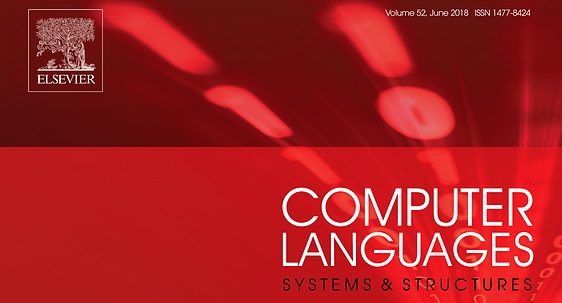Our special issue on Quality in Model-Driven Engineering has now been finalized and published online in the Computer Languages, Systems & Structures journal linked to the Quality Aspects in Model Driven Engineering track at QUATIC 2016 but open also to papers that were not initially submitted and accepted in that conference.
You can read online our preface for this special issue where we describe the review process and summarize the contents of the accepted papers. I reproduce also this preface below.
Model-driven engineering (MDE) is becoming one of the dominant software engineering paradigms. MDE advocates for the use of software models and model transformations (to perform manipulations on models) as the main artifacts in all software engineering activities. As such, MDE promotes higher levels of abstraction, therefore reducing the complexity of software development and promoting communication among the several stakeholders in the development process (e.g. product managers, designers, programmers).
MDE initiatives, like OMGs Model-Driven Architecture (MDA), make claims of increased quality and productivity by separating business and application logic from underlying platform technology, transforming models to other models and automating code generation (ranging from system skeletons to complete, deployable products). Nevertheless, this change of perspective implies that correctness of models becomes a key factor in the quality of the final software product. Any defect in the model will propagate into defects in the code.
However, while quality assurance is a well-known topic in “traditional” Software Engineering, less is known on how to assess quality across the MDE lifecycle (encompassing new activities such as metamodel engineering or transformations specification), as well as on the effective improvements on quality aspects obtained by applying MDE itself, face to not using it at all.
The goal of this special issue was to help shed new light on these issues. Authors of papers presented at the thematic track “Quality Aspects in Model- Driven Engineering” part of the 10th International Conference on the Quality of Information and Communications Technology, QUATIC 2016 [1] were encouraged to submit their work but submission was open to any other work targeting the topics in this area. Each paper was revised by three reviewers and discussed in detail. Out of nine submitted papers, four were eventually accepted. The papers included in this special issue are the following:
- Achieving Model Quality through Model Validation, Verification and Exploration by Martin Gogolla, Frank Hilken and Khanh-Hoang Doan. This paper shows how modern instance finders can be utilized for a wide range of model validation and verification as well as fault detection tasks in UML and OCL models. Examples are shown with the USE model validator.
- Frame Conditions in the Automatic Validation and Verification of UML/OCL Models – A Symbolic Formulation of modifies only Statements by Nils Przigoda, Philipp Niemann, Jonas Gomes Filho, Robert Wille and Rolf Drechsler. The frame problem refers to the inability to easily express that a procedure changes only those things it has to, leaving everything else unmodified. In this paper, a solution to the frame problem for UML/OCL models, based on the use of modifies only statements is presented.
- Case Studies on Automated Verification with Slope Boundaries for Block Diagrams by Christian Dernehl, Jan Kühn , nd Stefan Kowalewski. Block diagrams are frequently used in embedded systems, assisting rapid prototyping. The paper introduces new verification techniques for this kind of models. The work is evaluated on case studies from the clinical intensive care, autonomous drone control, and driver assistance domains.
- Improving Formal Analysis of State Machines with Particular Emphasis on And-Cross Transitions by Opeyemi O. Adesina, Timothy C. Leth- bridge, Stéphane S. Somé, Vahdat Abdelzad and Alvine Boaye Belle. In this paper, the authors present an approach to formally encode state machines for the purpose of symbolic verification, with an emphasis on and- cross transitions (transitions whose source and destination states are in distinct parallel regions of the same enclosing orthogonal state) typically ignore in other approaches.
We believe these papers offer a novel and diverse perspective on the field of model quality assessment and, as editors of this special issue, we hope you will find them as interesting as we did.
We would like to acknowledge the rigour and dedication of the many re- viewers of this special issue. We are also thankful to the Computer Languages, Systems and Structures Editor in Chief, Marjan Mernik, for their support, help and lots of patience throughout the process of preparing this special issue.
[1] M. Mernik, J. Cabot, Foreword to the thematic track: Quality aspects in model-driven engineering, in: 10th International Conference on the Quality of Information and Communications Technology, QUATIC 2016, Lisbon, Portugal, September 6-9, 2016, IEEE Computer Society, 2016, p. 87. doi: 10.1109/QUATIC.2016.024.
FNR Pearl Chair. Head of the Software Engineering RDI Unit at LIST. Affiliate Professor at University of Luxembourg. More about me.




Recent Comments